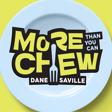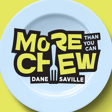
Bad Content (And How to Fix It)
Content isn't just king: it's the whole court and castle. If you've invested in SEO for your small business, one of the core elements of the strategy is, or at least should be, content creation. Unfortunately, too many agencies either outsource to the cheapest freelancers or expect their SEOs to write it themselves. Writing, however, is a craft that requires a high degree of skill built from years of (you guessed it!) writing.
From quick tips on effective writing to proper structure, language, and intent of your content to the right messaging for both B2C and B2B businesses, listeners will get several actionable tips that can be applied to either writing their own content or reviewing content submitted by their agency partner.
In addition, as part of the More Than You Can Chew tradition, Dane shares two spots you must check out: Dante in Cleveland, Ohio, and The Daniel in New York City.
For both restaurants, select the tasting menu.
As always, if you like what you've heard, please follow the podcast on your favorite platform and share it with your network on social media!
If you're looking for SEO or PPC services, or you'd like an audit of your website or content, please reach out to Dane Saville at dane.saville@searchlabdigital.com.
Thanks to the leadership at SearchLab Digital for making this podcast possible.

